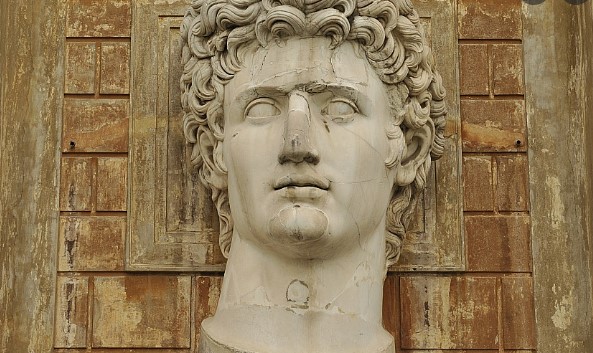
Ancient Roman Bust of Goodwill – A young woman named Laura Young recently bought an ancient Roman bust from a Goodwill store. Young was intrigued by the ancient sculpture, and soon learned that it was the missing piece of the Sextus Germanicus. The bust, which had been buried in a German cellar, also features King Ludwig of Bavaria and a World War II soldier. But the question that most collectors have is: is this ancient Roman bust really real? Young began a research project, visiting auction houses and art history experts to determine the bust’s authenticity. Young was ultimately able to identify the work thanks to a Sotheby’s consultant who knew the German authorities.
Laura Young bought an ancient Roman bust
Daftar Isi
Laura Young bought an ancient Roman bust at Goodwill last year, and was fascinated by its ancient history. She wanted to know where it came from and why it was in Texas, and so she sought the advice of art historians at the University of Texas at Austin and at auction houses. She contacted art historians at the University of Texas at Austin and an art consultant with Sotheby’s, who were able to identify the bust and connect her with the German authorities.
Ancient Roman Bust of Goodwill
After purchasing the bust, Young informed the German government of her discovery and returned it to the Bavarian Administration of State-owned Palaces. The bust likely depicts Sextus Pompey, a man who dedicated his life to avenging the death of his father. Despite this, Young feels a sense of bittersweet about acquiring this piece of ancient history. Young hopes that her bust will become part of history.
Sextus Germanicus
Sextus Germanicus, an ancient Roman bust of goodwill, depicts a man whose goodwill was not easily won, but was well worth the sacrifice. Drusus Germanicus was a military commander and politician who helped to expand the Roman empire. He had three direct descendants, Julius Caesar, Claudius, and Nero, who all went on to become powerful leaders.
Originally, the bust could have represented Sextus Pompey, a Roman military leader who fought against Julius Caesar. According to a report by Sotheby’s, it was stolen from a Bavarian museum during World War II and has now been returned to Germany. Whether it is an actual Roman bust or a fake is speculative.
Young consulted with academic experts to learn more about the statue. The bust is said to date back to the Julio-Claudian era, which lasted from 27 B.C.E. to 68 C.E., according to the university’s art historian Stephennie Mulder. Young also contacted a local Goodwill store to gain insight into its history.

King Ludwig of Bavaria
This marble bust once sat in the Pompeiianum, a replica of the city of Pompeii, built by King Ludwig I of Bavaria. The king was a lover of ancient history and a rabid collector of ancient statues. He based the design of the building on the early excavations at Pompeii. His estate was decorated with many statues, including this one. King Ludwig owned the bust for almost a century, and was particularly fond of the ancient art.
The statue was missing from its homeland since World War II. Since then, the statue has been in private hands. The museum of art in San Antonio has agreed to exhibit it until 2023, which is when it will return to its homeland. While the statue will remain on display in San Antonio, it will be returned to the Bavarian government. This is a great goodwill gesture for the city of San Antonio and the Bavarian people.
World War II soldier
A World War II soldier named Dennis reportedly looted an Ancient Roman bust from a German museum and brought it to the United States. The bust was listed in a century-old catalogue of the museum’s collection, but the soldier had no proof of ownership. Young was intrigued by the story and researched the bust’s authenticity. She called auction houses, which would not touch the bust until she could prove that he was the rightful owner. She consulted with museum curators and attorneys, and finally named the bust Dennis.
The 52-pound marble bust was discovered by an art collector during a trip to Texas, after it had gone missing during World War II. The statue was originally installed at the replica of the Pompejanum in Aschaffenburg, Bavaria, which was destroyed by Allied bombers in 1944. After the war, the U.S. Army established a number of military installations in Aschaffenburg, and the bust was likely brought by a returning soldier to Texas.






